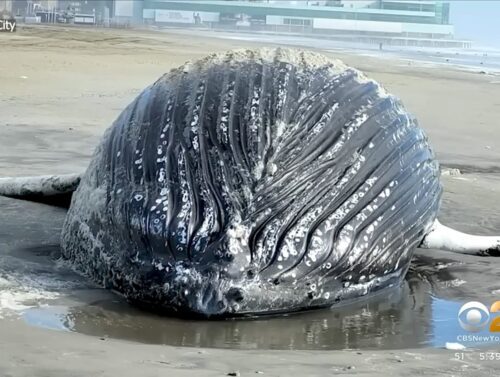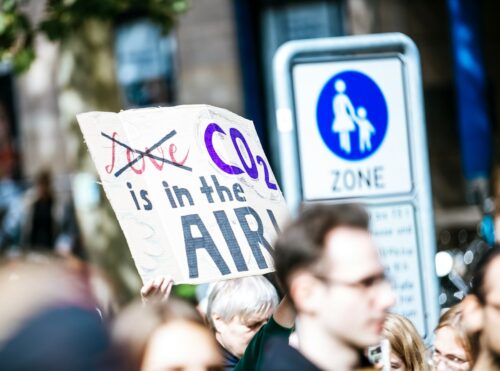
As California braces for another wildfire season, forestry experts warn that decades of regulatory mismanagement — not climate change or Trump-era budget cuts — have left forests dangerously overloaded with fuel. [emphasis, links added]
Democrats have blamed climate change and agency rollbacks for creating tinderbox conditions, but forestry experts see a self-inflicted wound that began festering as far back as the Clinton administration.
Three decades of environmental litigation, they say, have warped forest management into a Byzantine maze of legal delays and procedural dead ends, leaving millions of acres to accumulate fuel faster than anyone can clear it.
The blame game intensified Friday as Democratic California Gov. Gavin Newsom took to X to point fingers at President Donald Trump.
“Donald Trump isn’t just threatening CA’s disaster aid, he’s also pushing for dangerous cuts ahead of wildfire season,” the governor said Friday. “A 63% REDUCTION in the U.S. Forest Service’s budget. A 30% REDUCTION in workforce — 10,000 employees … He is literally playing politics with people’s lives.”
Newsom then accused Trump of “sabotage” in a follow-up post Saturday, citing a San Francisco Chronicle article that reported less than 20% of National Guard troops deployed to Los Angeles were actually on the ground fighting the state’s seven ongoing fires — the worst of which is the Monte Fire, which burned over a thousand acres and was 90% contained as of Monday.
But Bob Zybach, an author and wildfire expert who has led the Oregon Websites and Watersheds Project since 1996, sees a different cause for California’s chronic wildfire problem.
“The problem isn’t all these massive numbers of wildfires,” he told the Daily Caller News Foundation. “The problem is the financial end of it. It’s not Trump, it’s the people, the litigants, who keep suing to shut down the timber industry, which has allowed the fuels to build up.”
Newsom’s office did not respond to a request for comment.
Democrats have already begun a chorus of preemptive condemnations against Trump ahead of wildfire season.
California Sen. Alex Padilla said in February he expects the president’s “flagrantly illegal” cuts to environmental agencies will “jeopardize communities that depend on a robust federal response to our wildfire crisis.”
Similarly, Newsom accused Trump’s cuts to the Forest Service of creating “rampant uncertainty ahead of peak wildfire season” in May, sentiments echoed in stories from The New York Times and the Los Angeles Times in mid-June.
But the numbers tell a story of long-accelerating destruction: before 2000, California experienced 45 megafires over an entire century, but since then, 35 megafires have scorched the state in just 25 years, with 2020 alone burning 4.3 million acres and causing $19 billion in economic devastation, according to Frontline Wildfire Defense.
Zybach credits this worsening regulatory logjam to environmental lawsuits funded through the Equal Access to Justice Act (EAJA), which pays plaintiffs’ attorney fees when they beat the government in civil cases.
“We have paid these people to shut down the work that would, one, produce good income for our rural counties and rural families, but two, would greatly reduce wildfire risk,” he said.
The transformation began with the 1994 Northwest Forest Plan, Zybach said, which started as the Clinton administration’s bid to save a species of owl by designating 7.4 million acres of its habitat as completely off-limits to logging, ultimately resulting in a reduction of Pacific Coast timber harvests by 80-90%.
“In the 1970s and ’80s, California and Oregon didn’t have these fires,” Zybach explained. “Then we put in the Clinton plan, the Northwest Forest Plan … I was on the cover of the national magazine Evergreen in 1994 and said, ‘If we put in the Clinton plan, we’re going to have catastrophic wildfires.’ And my predictions were accurate.”
California’s wildfire response is handicapped by the National Environmental Policy Act (NEPA) and the Endangered Species Act — two bills introduced by Democrats but signed into law by former President Richard Nixon, according to Nick Smith, a spokesman for the American Forest Resource Council.
“The greatest obstacle to doing more forest management, especially on National Forest lands, is the cost and time requirements of federal environmental regulations,” Smith said.
“NEPA alone typically adds an average of three-and-a-half years of planning time to thin one stand of overstocked forest.”
The human cost was shown in Berry Creek, California, destroyed in the 2020 North Complex, where 16 people died after protective forest-thinning projects sat trapped in California Environmental Quality Act reviews, according to the San Francisco Chronicle.
The fire consumed 180,000 acres in 24 hours through untreated forests, Sierra Forest Legacy reported, incinerating the elementary school, fire station, and most homes while planned treatments languished in bureaucratic limbo.
“Gavin Newsom famously said, ‘Oh, this fire, it was caused by global warming,’ ” Zybach recalled. “And he’s sitting in the ruins of a fire that was set by the Forest Service … it’s very revealing.”
Read rest at IJR



















Governor News-Scum and his fellow Dem-O-Rats once again try to find scapegoats for their own poor leadership